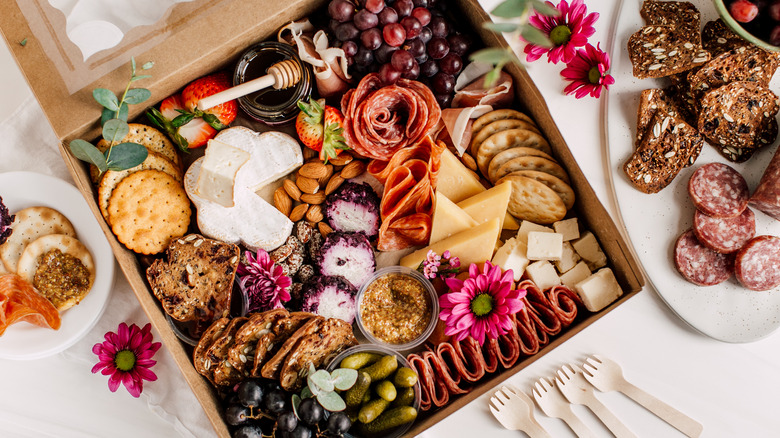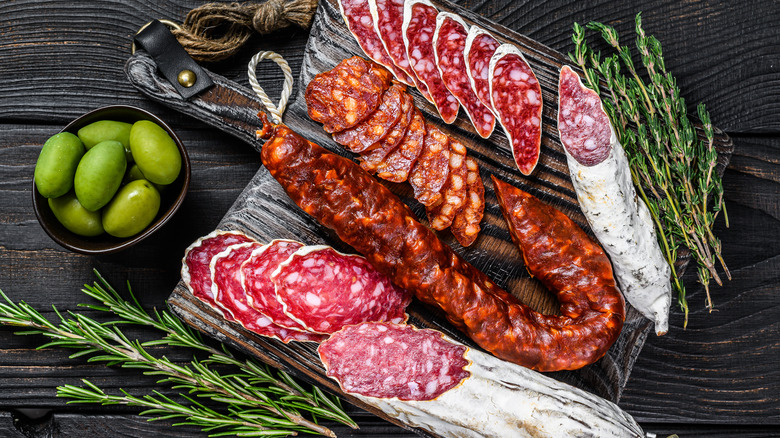Why Are Charcuterie Boards So Expensive?
There's no denying that the classic charcuterie board is having a moment, with aspirational photos popping up on social media feeds across the world. But, for some, the idea of experiencing this trend firsthand can feel daunting — especially from a financial perspective.
Put simply: Charcuterie boards can cost a pretty penny. According to Eat Cured Meat, this is because the dried and cured meats that constitute a charcuterie board are more time- and labor-intensive than their fresher counterparts. Not only do the meats need to age for months (or even years!) prior to eating, but the curing process is highly complex in and of itself. All of these factors translate to a more expensive final product.
Home Kitchen Talk also points out that the cuts of meat used to make charcuterie, such as prosciutto, are typically of a higher quality than what you might find in your average deli case. Eat Cured Meat echoes this sentiment, adding that the animals used for charcuterie often experience better diets and farming practices compared to mainstream industrial farming. These added expenses contribute to the final product's higher price tag.
How to build an affordable charcuterie board
While it's true that charcuterie can be expensive, you shouldn't let the cost deter you from trying out the trend. Simply follow a few tips and tricks to build a wallet-friendly board at home. According to The Penny Hoarder, you'll want your charcuterie board to include not just meats, but also cheeses, spreads, olives, and dried fruit. For meat, stocking up on salami and pepperoni is often a more cost-effective route than buying prosciutto or other specialty meats. The site also suggests avoiding pre-sliced cheeses, as these tend to be pricier than those purchased in block form.
Meanwhile, MacKenzie Smith of Grilled Cheese Social adds that, to save money, you should raid your own kitchen cabinets before heading to the store. "Chances are, you probably already have a lot of ingredients on hand," she wrote. Specifically, Smith notes your budget charcuterie board can make the most of pickles and olives from the fridge, as well as condiments like mustards and jams. If you have any dried fruits and nuts, those can also be added to your board, along with all kinds of crackers.

